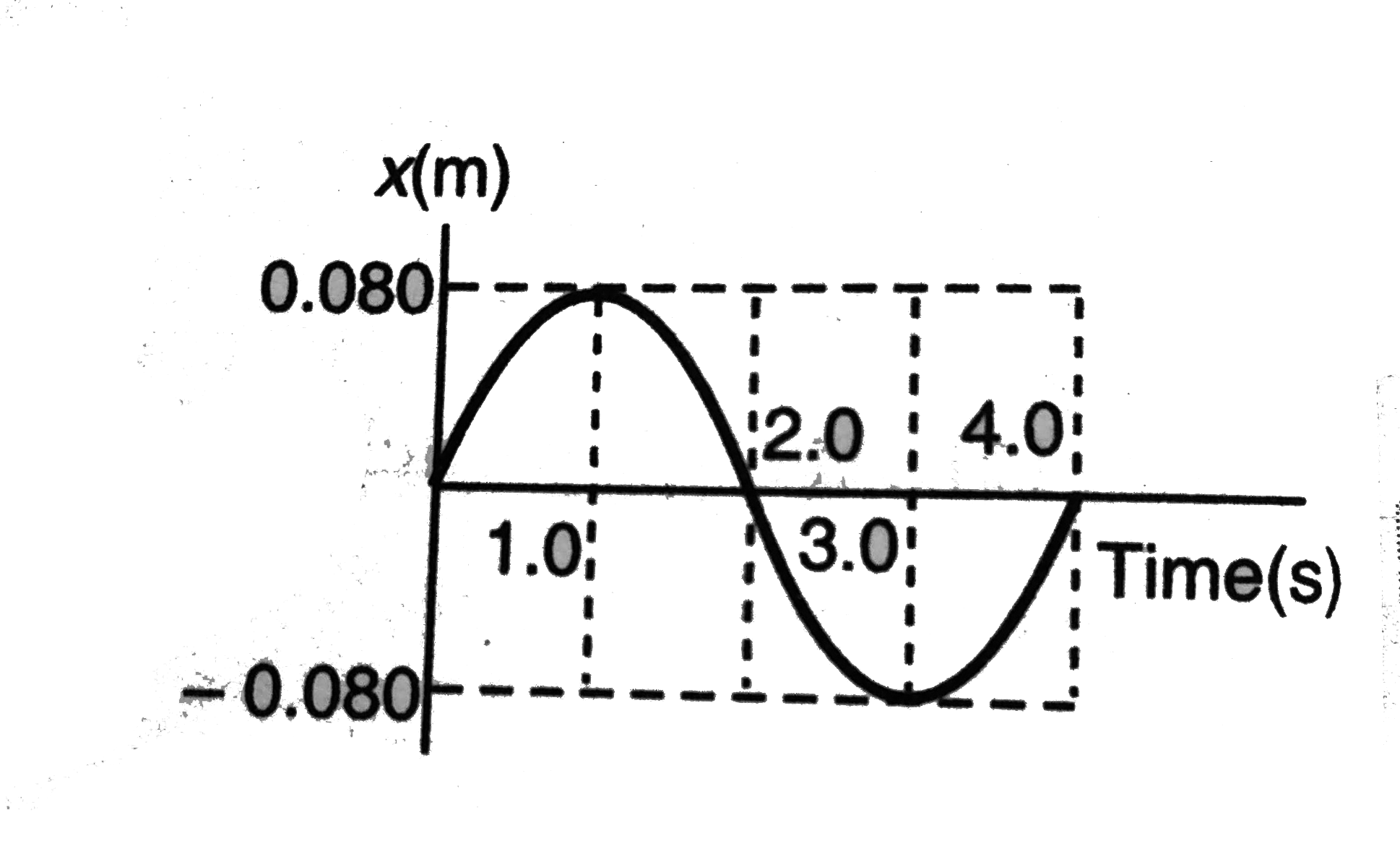An object is attched to the bottom of a light vertical spring and set vibrating. The maximum speed of the object is 15cm/s and the period is 628 milli seconds. The amplitude of the motion in centimetres is
3.0
2.0
1.5
1.0
The correct Answer is:C
vmax=Aω=A2πT
⇒15=A×2π628×10−3
⇒A=1.5cm.
Topper's Solved these Questions
- BOOK - ERRORLESSCHAPTER - SIMPLE HARMONIC MOTIONEXERCISE - NCERT BASED QUESTIONS (Acceleration of Simple Harmonic Motion)11videos
SIMPLE HARMONIC MOTION
- BOOK - ERRORLESSCHAPTER - SIMPLE HARMONIC MOTIONEXERCISE - NCERT BASED QUESTIONS (Energy of Simple Harmonic Motion)18videos
SIMPLE HARMONIC MOTION
- BOOK - ERRORLESSCHAPTER - SIMPLE HARMONIC MOTIONEXERCISE - Assertion & Reason15videos
SIMPLE HARMONIC MOTION
- BOOK - ERRORLESSCHAPTER - ROTATIONAL MOTIONEXERCISE - Assertion & Reason25videos
ROTATIONAL MOTION
- BOOK - ERRORLESSCHAPTER - SURFACE TENSIONEXERCISE - ASSERTION & REASON11videos
SURFACE TENSION
Similar Questions
A body undergoing simple harmonic motion has a maximum acceleration of 8 m/s2 , and a maximum speed of1.6m/s. Find the period and the amplitude of the motion.
View SolutionMaximum acceleration of an object in simple harmonic motion is 24m/s^(2) and maximum velocity is 16m/ sec. The amplitude of object is
View Solution
Knowledge Check
- Question 1 - Select One
An object is attached to the bottom of a light verticle spring and set vibrating The maximum speed of the object is 15cm/sec and the time in centimeters is
A3.0B2.0C1.5D1.0 - Question 2 - Select One
An object of mass m, oscillating on the end of a spring with spring constant k has amplitude A. its maximum speed is
AA√k/mBA2k/mCA√m/kDAm/k - Question 3 - Select One
A 0.20kg object mass attached to a spring whose spring constant is 500N/m executes simple harmonic motion. If its maximum speed is 5.0m/s, the amplitude of its oscillation is
A0.0020mB0.10mC0.20mD25m
An object of mass 0.8kg is attached to one end of a spring and the system is set into simple harmonic motion. The displacement x of the object as a fuction of time is shown in the figure. With the aid of the data, determine
(a) the amplitude A of the motion,
(b) the angular frequency ω,
( c) the spring constant K,
(d) the speed of the object at t=1.0s and
(e) the magnitude of the object's acceleration at t=1.0s.
 View Solution
View SolutionA 50 gm mass at the end of a spring vibrates in SHM. The amplitude of the motion is 12 c.m. and the period is 1.70 s. Find (a) the frequency (b) the spring constant (c) the maximum speed of the mass (d) the maximum acceleration of the mass (e) the speed when the displacement is 6 c.m. (f) the acceleration when x = 6 c.m.
View SolutionAn block rides on position that is moving vertically with simple harmonic motion. The maximum speed of the piston is 2m/s. At what minimum amplitude of motion will the block and piston separate? (g=10m/s2)
View SolutionA 2.0 - kg block executes SHM while attached to a horizontal spring of spring constant 200N/m. The maximum speed of the block as it slides on a horizontal frictionless surface is 3.0m/s.
What is the amplitude of the block's motion?View SolutionA particle executes S.H.M. with a period of 6 second and amplitude of 3 cm . Its maximum speed in cm / sec is
View Solution

